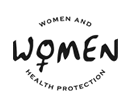Transparency and the Drug Approval Process at Health Canada
December 2005
Abstract
Public concern about serious harm caused by prescription drugs has led to an increased focus on the Canadian drug approval process and its lack of transparency. Many researchers and public health advocates maintain that, although Health Canada’s primary mandate is to protect public health and safety, this mandate has been overshadowed by another agenda: the protection of the commercial interests of drug manufacturers.
The Canadian government, through its Health Minister, has acknowledged a lack of openness in drug approval processes and made a commitment to increase transparency. Health Canada has, in recent years, taken a number of small steps toward fulfilling this commitment. But there is still a long way to go. Canada continues to lag behind the US in making information related to drug approvals publicly available.
Women, as the primary health decision-makers in many families and the predominant users of many prescription drugs, are disproportionately affected by the lack of balanced and accessible information about prescription drugs.
This paper discusses some of the history behind the drug approval transparency debate. It then provides a detailed review of the kinds of information that Canadians, be they health professionals, researchers or the general public, cannot obtain. The paper demonstrates in each case why such information should, in the interest of public health and safety, be readily available. It also sets out how the Access to Information Act is not an effective or satisfying route, and certainly not a timely one, to obtain information about drug approval and testing data.
The conclusion: The fact that Health Canada’s drug approval processes are not transparent is directly contrary to the public interest. By maintaining that information about the drug approval process is confidential, the federal government appears to be protecting drug companies instead of protecting the public. It is treating information about drug safety as a commodity with a monetary value to companies, rather than as a public resource.
The paper ends with the following recommendations:
- Post all clinical trials reviewed by Health Canada to approve a drug, published and unpublished, on the Health Canada website.
- Post all Health Canada reviewer reports, including those that did not support approval, on the Health Canada website.
- Conduct expert advisory committee meetings in public, with time set aside for public comment. Make all material that is available to advisory committees publicly available at least one week prior to the meeting.
- When expert advisory committees have been asked to report on an application for approval, post their full reports.
- Post all of the above information after a drug is approved, but before it is available for sale in Canada.
- When a drug is approved with a Notice of Compliance with Conditions, publicly post full disclosure of conditions placed on the approval on the Health Canada website the same day as the NOC/c is issued.
- Make material that companies present to fulfill the conditions attached to a NOC/c publicly available.
- Fully disclose all serious adverse events during clinical trials.
- Make public clinical trial data from drugs denied approval and from drugs that companies voluntarily withdraw from the approval process.
- Set an upward limit of 25% on the proportion of the budget of the Therapeutics Products Directorate that comes from user fees, with government appropriations making up the balance. This arrangement would reduce the potential conflict of interest associated with industry funding, hence benefiting the transparency initiative.
- Ensure there is no direct link between drug company user fees and the review process. As with recommendation 10, this would decrease the potential for conflict of interest and benefit the transparency initiative.
- Ensure that anyone involved in the drug review process who reports wrongdoing will be protected from harm and that the public will be fully informed about wrongdoing in this process. Ensure that everyone has the right to report wrongdoing anonymously and directly to an independent whistleblower watchdog agency.
Read the full report. (252KB pdf).
Copyright ©2006-2007 Women and Health Protection

